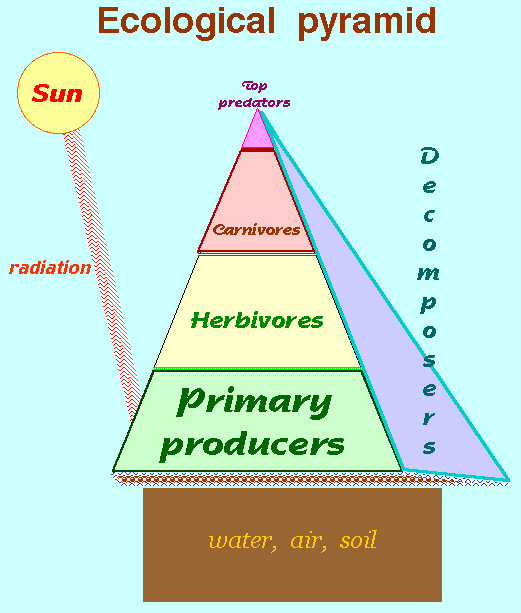definitions
 Biocoenosis as an organizing concept
Biocoenosis as an organizing concept Words
Biotic Community
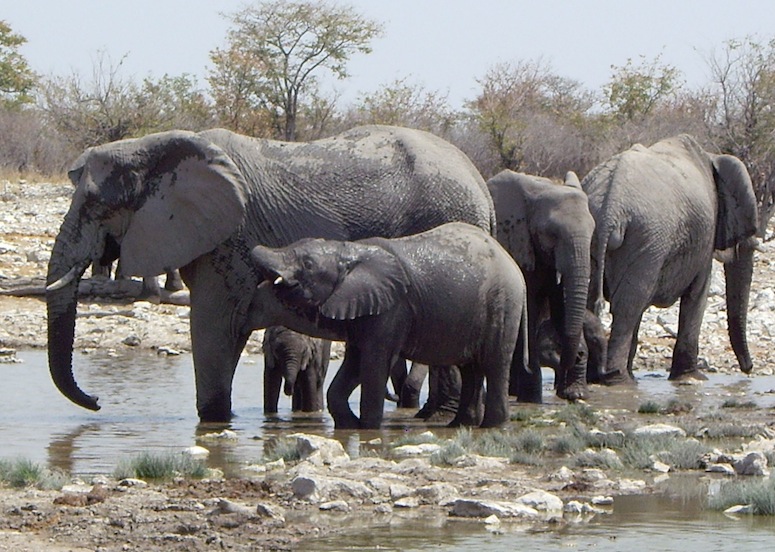 |
All the
biological inhabitants of a place, or habitat when taken together. The concept defines an amalgam, an amassing of individuals, or an association of different living
creatures. These species living interdependently in an adjacent, proximate, or common area fall into five large groups. |
| including: | |
| plants
animals fungi bacteria
virus |
- the producers
- the consumers - the decomposers |
is the name used in America for the biocoenose.
The biotic community is the basis of what environmental economists refer to as natural capital.
What are the five kingdoms of life?
Are there six kingdoms of life?
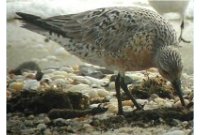 These inhabitants or residents includes the periodic migrants to, through or from places such that remote biotic communities may be linked by fish, birds, insects or other migratory species. For example Calidris canutus, the migratory red knot bird ties the Arctic tundra, to the Delaware estuary, to the Patagonian grasslands due to its annual migration patterns. Other than the Delaware Bay estuary, only the Copper River Delta on the Alaskan coast hosts more birds.
These inhabitants or residents includes the periodic migrants to, through or from places such that remote biotic communities may be linked by fish, birds, insects or other migratory species. For example Calidris canutus, the migratory red knot bird ties the Arctic tundra, to the Delaware estuary, to the Patagonian grasslands due to its annual migration patterns. Other than the Delaware Bay estuary, only the Copper River Delta on the Alaskan coast hosts more birds.
There are 4 main species of shorebirds that use the Delaware Bay estuary as a stopover area 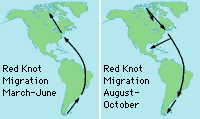 during their northward migration: Red Knot, Semipalmated Sandpiper, Ruddy Turnstone, and Sanderlings. For some of these species, significant proportions of the hemispheric populations can concentrate along the bay in May and June (Red Knot: 80% & Sanderlings: 30%).
during their northward migration: Red Knot, Semipalmated Sandpiper, Ruddy Turnstone, and Sanderlings. For some of these species, significant proportions of the hemispheric populations can concentrate along the bay in May and June (Red Knot: 80% & Sanderlings: 30%).
The migratory flight of the Red Knot is an example of the extreme distances shorebirds travel and the dependence they have on stopover areas such as Delaware Bay.
biocenose (alternatively spelled: biocoenose, and biocoenosis)
All of the interacting organisms living together in specific habitat, usually containing producer, consumer, reducer, and transformer types.
The term was initially applied to an oyster reef by Karl Möbius (in the late 1800s) when inspecting the associations of living creatures who together altered the physical conditions of the Elbe River between Hamburg and the North Sea. He though of the reef as an "amassing of individuals" into a unitary situation for which he used the term biocoenose, and which some today would call an eco-biological community.
![]()
Also referred to: ecosystem, biotic community, association.
The problem of terms or more to the point a cumbersome nomenclature is inherent in the words used to describe a similar sort of conditions shared by plants, animals, fungi and bacteria called a biocoenose, or biotic community. Much like the word habitat these words have been called jargon --known to insiders and used as a wedge against the uninitiated. But they are also a problem because each is a general figure of speech masquerading as a specialized scientific term that could just as easily be called a neighborhood.
Habitat is the sheltering physical, chemical and geological conditions that comprise a livable place or neighborhood.
Biocoenose, is the word created by the combining of biological (species) with kinesis, [bio+kinesis] to suggest that all places were life emerges is filled with the energy that allows the functioning of species in the exploitation of their range. That range is meant to include the feeding grounds, nurseries, or breeding spots necessary for the success of any species whose life cycle makes demands on their surroundings.
Such a compound word is used to refer to all the living creatures that share the neighborhood with one another, compete for a region's advantages, and seek opportunities when they present themselves for more food, security, or reproductive opportunities.
![]()
These creatures all occupy a particular geographical area.
They are all part of a communal effort to function in ways that one participants products or wastes are another creatures necessities or raw materials.
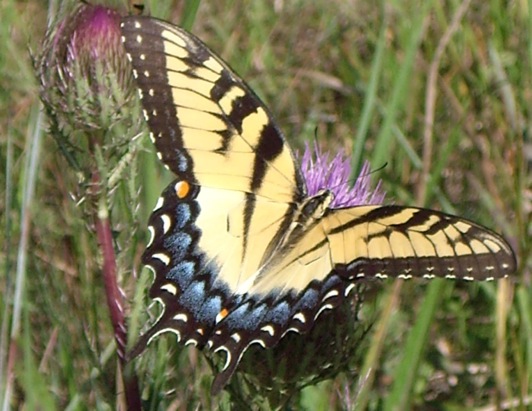
There is a completeness in the functional integrity of the biological community. The integrity means the two way, interactively codependent behavior that characterizes ecological relations is enhanced and not diminished. The reciprocal quality of ecological interaction diminishes, for example, due to the stress of excessive mercury or scarcity caused by too little of a necessary nutrient. Equally distressing for species is the lack of opportunity for creatures to acquire the space to raise their young.
By comparison the integrity of a structure or an exterior design is characterized by the form and function of all the parts as they work to some common purpose such as the parts of an arch that carry and extend the weight of a building by arranging materials in a specific pattern to allow for structural support. When used effectively the archway allows for a minimal amount of material to support a maximum amount of weight without collapsing. It is thus argued that the archway has structural integrity, because the parts work to sustain the entire edifice.
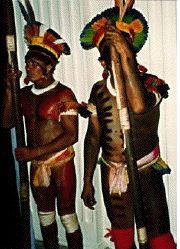
![]()
Ecology | Ecosystem | Habitat | Model
G. Tyler Miller on environmental science.


